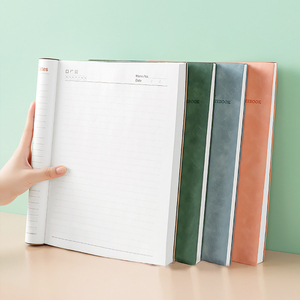Introduction to Record Book Students
A record book for students is an essential tool designed for educational institutions, helping educators and students maintain organized records of academic performance, attendance, and other vital activities. These books play a crucial role in tracking progress throughout the academic year, ensuring that both teachers and students can monitor achievements and areas requiring improvement. With the advent of digitization, traditional record books have evolved, yet their fundamental significance in education remains unparalleled.
Types of Record Book Students
- Attendance Record Books: These books are specifically designed to document student attendance on a daily, weekly, or monthly basis. This helps schools maintain accurate attendance records for administrative purposes.
- Grade Record Books: These record books are employed to keep track of students' grades in various subjects. Teachers can easily input and update students' performance, making it straightforward to compute final grades at the end of the term.
- Assignment and Project Record Books: Ideal for tracking homework, projects, and assignments, these books help students and educators manage due dates, submissions, and feedback.
- Progress Record Books: These comprehensive books allow for a detailed overview of each student's progress, documenting strengths, weaknesses, and educational milestones throughout the academic journey.
Function and Feature of Record Book Students
- Comprehensive Tracking: Record books enable educators to perform comprehensive tracking of every student's academic journey, including grades, attendance, and feedback.
- Customizable Layouts: Many record books come with customizable layouts, allowing teachers to adjust their recording methods according to their individual classroom needs.
- Durable Construction: High-quality record books are often made from durable materials that withstand wear and tear, maintaining their professional appearance for years.
- Easy Reference: With clearly defined sections for different types of records, these books allow quick access to essential information, facilitating comprehensive reviews during parent-teacher conferences.
- Portable Design: Many record books are designed to be lightweight and portable, making it easy for teachers to carry them from one class to another or even home for grading.
Applications of Record Book Students
- School Administration: Record books serve a foundational role in school administration, providing necessary documentation for attendance, grades, and academic integrity.
- Parent-Teacher Communication: These books can be shared between educators and parents to open lines of communication regarding student progress, areas of improvement, and academic expectations.
- Curriculum Development: Insights gleaned from record books can aid in curriculum development, allowing educational institutions to tailor their programs to better meet student needs based on performance data.
- Long-Term Educational Benchmarking: By maintaining records over the years, schools can use historical data for benchmarking student progress, helping to identify trends and implement necessary changes in teaching methods.
Advantages of Using Record Book Students
- Enhanced Organization: A dedicated record book helps educators remain organized, ensuring no vital information slips through the cracks, leading to better overall academic management.
- Accountability and Transparency: Detailed record-keeping promotes accountability among both teachers and students, establishing a transparent academic environment.
- Facilitates Goal Setting: By having access to recorded data, educators and students can set realistic academic goals, monitor progress, and celebrate achievements.
- Supports Personalized Learning: Understanding each student’s performance can help educators tailor their approaches to suit individual learning styles and needs, fostering a more effective learning environment.






















































